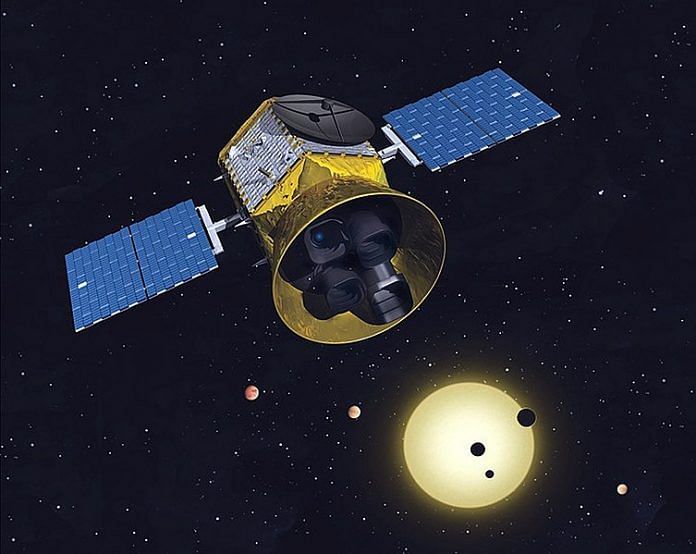Bengaluru: Astronomers using NASA’s Transiting Exoplanet Survey Satellite (TESS) have observed a six-star system called TIC 168789840, also known as TYC 7037-89-1, that is around 2,000 light years away from the earth.
The astronomers have also called it the ‘sextuply-eclipsing sextuple star system’. This far away system was discovered using the NASA supercomputer called Discover by extracting useful information from years of existing TESS data.
While it was difficult to distinguish the individual stars, they showed a consistent pattern of dimming and brightening through which the astronomers were able to understand that starlight was being eclipsed by other stars (and not planets) with a line of sight from earth.
The discovery and analysis of the six-star system has been reported on a pre-print (not yet peer reviewed) server arXiv. It has been accepted for publication in the journal The Astronomical Journal.
Also read: For the first time ever, astronomers are witnessing a galaxy’s ‘death’ as it’s happening
Sextuple eclipsing system
The star system is the fourth known sextuple star system where six stars are gravitationally bound to each other. The most famous of these is the Castor system discovered originally in the 18th century in the Gemini constellation but identified in 1920 to be a sextuple system, and is located about 51 light years away from the earth.
There are many configurations in which six stars circle a common centre or each other. In another sextuple system, known as the ADS 9731 system, four stars circle a common point, of which two stars are actually binaries.
However, the TIC 168789840 is aligned differently. Two pairs of inner stars orbit around a common barycentre (the system’s centre of mass) every 3.7 years, while the outer binary pair go around the inner four every 2,000 years. Among these, the three binary star pairs are also made of two stars that whip around each other’s common centre of mass.
One of the inner pair of binaries revolves around each other in 31 hours, while the other does in 38 hours. The outer binary stars revolve around each other in about 197 hours.
The inner binaries orbit too close to each other, causing any potential planet to be ejected, explained the astronomers. However, the outer binaries may host planets that could have stellar views of multiple suns and sunsets.
This is the first star system where all stars in the same system eclipse each other from our line of sight, leading the astronomers to describe the system as sextuply-eclipsing.
AI in astronomy
Astronomy is increasingly becoming reliant on machine learning and large scale data processing due to the sheer volume of information being acquired on a daily basis.
Lead authors Brian Powell, a data scientist at NASA’s High Energy Astrophysics Science Archive Research Center, and Veselin Kostov, an astrophysicist at the US-based SETI Institute, designed a neural network that could identify eclipsing binary stars when combing through the TESS data.
TIC 168789840 is also the only sextuple star system in our line of sight where the stars transit or pass in front of one another. Such transits are typically observed in exoplanets, where planets move in front of a star, causing a dimming in starlight and with which scientists can deduce the size of the planet blocking the star.
The neural network “studied” nearly 80 million records that dealt with such dimming of starlight caused by other stars, and discovered many such multiple star super systems. TIC 168789840 was discovered in March 2020, after which amateur astronomers were made aware of the data and contributed to confirmed it through observations.
Astronomers are still not clear on how such large star systems with multiple stars were formed. One of the authors has speculated that in this system, three stars were formed first from a central cloud, after which each star was enveloped with material from the same cloud, giving them all an eventual secondary companion.
Discoveries of such star systems and observations of their behaviour can give more insight into how these systems were formed and evolve, thus improving our understanding of the universe.
Also read: Mars, Moon & a fresh pair of eyes in the sky — the big space missions planned for 2021






